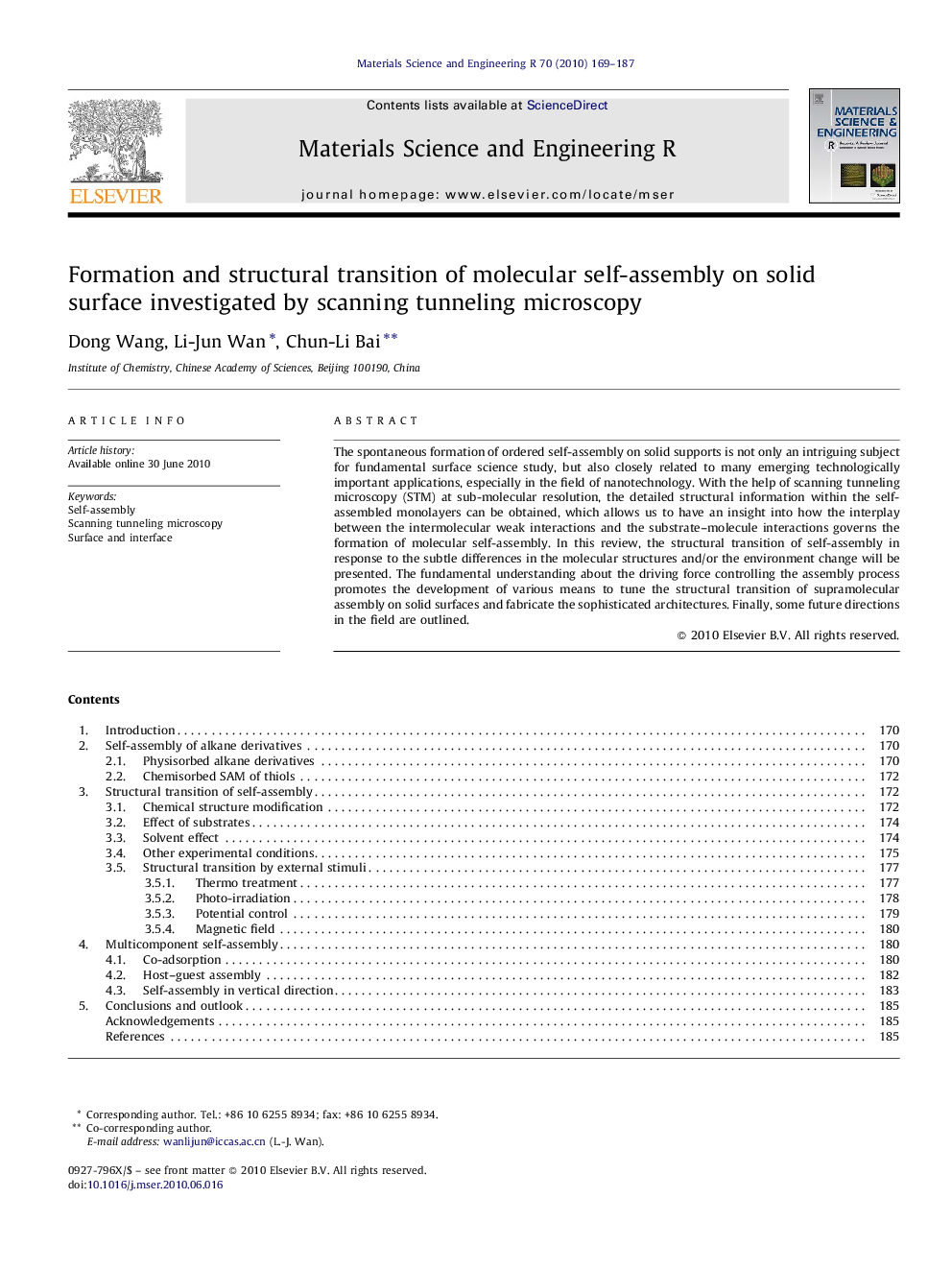| Article ID | Journal | Published Year | Pages | File Type |
|---|---|---|---|---|
| 1532485 | Materials Science and Engineering: R: Reports | 2010 | 19 Pages |
The spontaneous formation of ordered self-assembly on solid supports is not only an intriguing subject for fundamental surface science study, but also closely related to many emerging technologically important applications, especially in the field of nanotechnology. With the help of scanning tunneling microscopy (STM) at sub-molecular resolution, the detailed structural information within the self-assembled monolayers can be obtained, which allows us to have an insight into how the interplay between the intermolecular weak interactions and the substrate–molecule interactions governs the formation of molecular self-assembly. In this review, the structural transition of self-assembly in response to the subtle differences in the molecular structures and/or the environment change will be presented. The fundamental understanding about the driving force controlling the assembly process promotes the development of various means to tune the structural transition of supramolecular assembly on solid surfaces and fabricate the sophisticated architectures. Finally, some future directions in the field are outlined.
